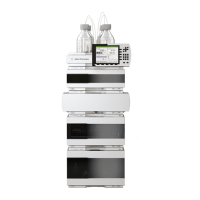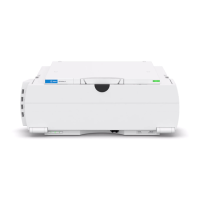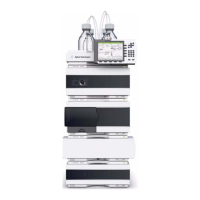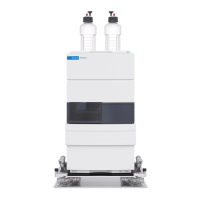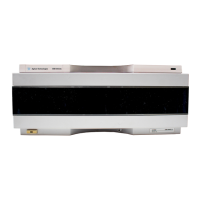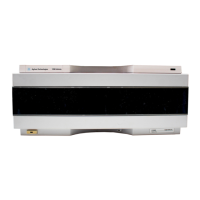Installing the GC 1
Agilent Intuvo 9000 GC Installation 53
Connect cryogenic cooling (if present).
Cryogenic cooling allows you to cool the MMI inlet, including
cooling to setpoints below ambient temperature. A solenoid
valve controls the flow of coolant to the inlet. The inlet can use
either liquid carbon dioxide (CO
2
), liquid nitrogen (N
2
), or
compressed air as a coolant.
CO
2
and N
2
coolants require different hardware on the GC. (You
can use air cooling on a multimode inlet, with the N
2
solenoid
valves and hardware.)
Flared or AN tubing fittings are commonly used to connect the
liquid supply tubing to the cryo coolant tank. Check with the
supplier of the coolant before plumbing to be sure you have the
correct fittings.
Connecting liquid carbon dioxide
Materials needed:
• 1/8-inch heavy-wall, stainless steel tubing
Do not use copper or thin-wall stainless steel tubing! Either
presents an explosion hazard.
Pressurized liquid CO
2
is a hazardous material. Take precautions
to protect personnel from high pressures and low temperatures.
CO
2
in high concentrations is toxic to humans; take precautions
to prevent hazardous concentrations. Consult your local supplier
for recommended safety precautions and delivery system design.
See the Intuvo 9000 GC, GC/MS, and ALS Site Preparation Guide
for important requirements for tubing.
Do not use padded tanks for CO
2
supplies. The cryogenic valve is
not designed to handle the higher pressures padded tanks
generate.
The tank must be equipped with an eductor tube (dip tube) that
reaches to the bottom of the tank, so that liquid (rather than
gaseous) CO
2
is drawn.
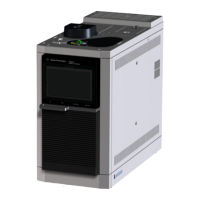
